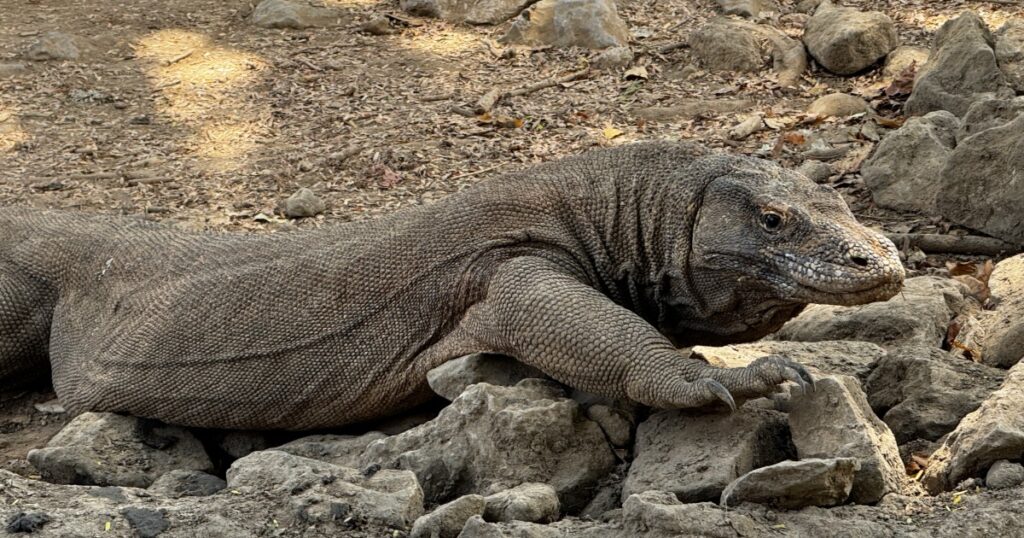I recently went to Komodo Island National Park to see the endangered ancient dragons you can only see in this region of Indonesia. I’d heard rumours that the park sedates the animals and decided to ask our guide. I can’t say I liked the answer. So are Komodo dragons drugged? Here’s what I learned and saw during my visit.
Some articles contain affiliate links. Bookings or purchases through these links generate a small commission for me at no extra cost to you. Thanks for your support!
The rumour: Komodo dragons drugged for tourist experience
I hadn’t heard about this until I arrived in Indonesia. I’d already booked my 3-day boat tour to the national park, and it’s kind of the main draw to the Komodo Islands, right? The dragons.
But I can’t say it came as a huge shock. Neighbouring countries like Thailand are notorious for a lack of animal welfare practices. It’s common for cubs and full-grown tigers to be given tranquilizers so tourists can safely approach them for a selfie.
So when another traveller told me they’d heard the Komodo dragons are drugged, I was incredibly disappointed, but it wasn’t hard to believe. And unfortunately, the first person who told me wasn’t the last. I met more people who brought up what they’d heard through the grapevine.
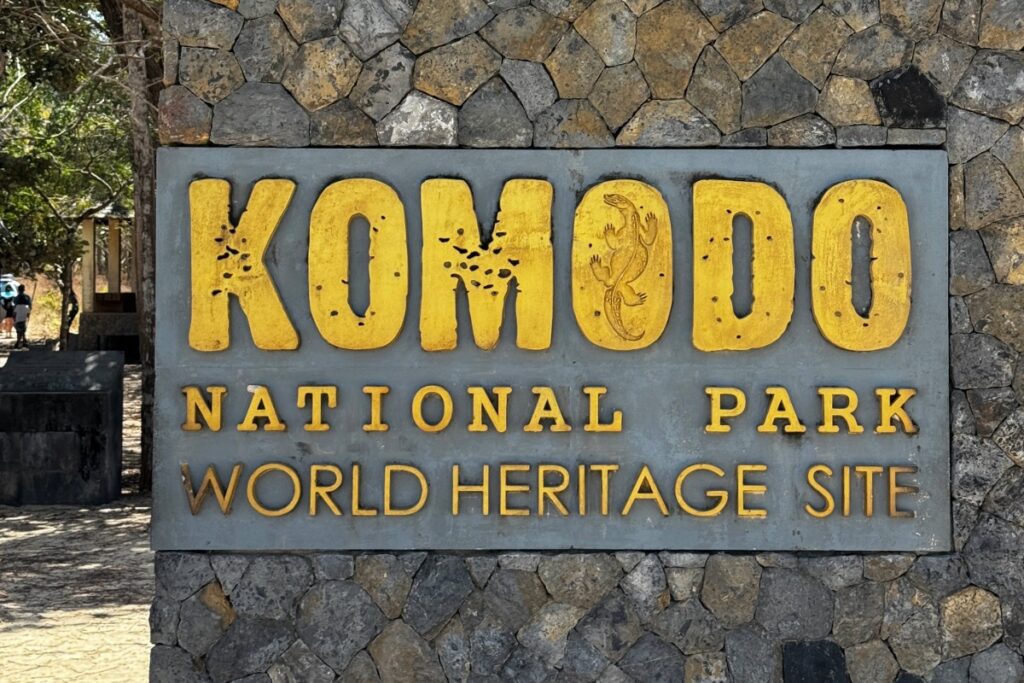
I asked a Komodo Island National Park ranger if the animals are drugged
The Komodo Islands in Indonesia are the only place in the world where you’ll find a Komodo dragon (not in captivity). They’re endemic to just five islands in the archipelago, and the park is a UNESCO World Heritage Site because of its unique biodiversity.
You can’t just wander around alone. Perhaps obviously, it’s necessary to go with an official National Park Ranger. Fortunately, the 600,000 IDR (36 USD, 60 NZD, 31 EUR) per person park entrance price tag includes a guided tour.
Our guide spoke English well and had clearly been doing this for a long time. Every quippy tourist joke was well-rehearsed. “The female Komodo dragons are more aggressive. Just like your wife.” He was more than happy to answer questions.
So when the opportunity presented itself — I was at the front of the group with just one other person — I quietly asked our guide if the dragons are ever given drugs. He hesitated for a second and slyly responded over his shoulder with a clear and audible “yes.” But then pointed to his stick to show me some blood and explained that they attack sometimes; indicating that it’s a fair reason to drug them and keep them at bay.
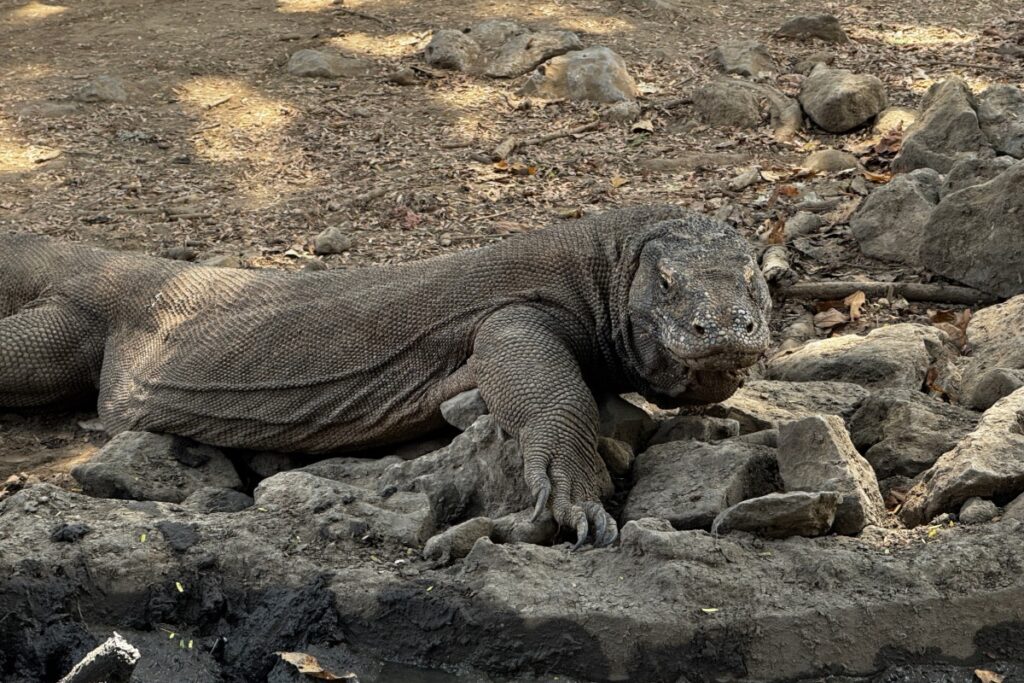
Other reasons I suspect the Komodo dragons are drugged
So him saying “yes” was obviously the most concrete. But it’s possible he thought he was telling me what I wanted to hear to feel safer. I was surprised by how many other online sources seem to believe they’re not drugged.
They let us get too close
We were able to get within about 2 metres (6 feet) of the Komodo dragons. At one point, it was completely encircled. If that’s not enough to make it feel threatened, I’m not sure what is. Whether they’re used to humans or not, this feels like it should be more dangerous.
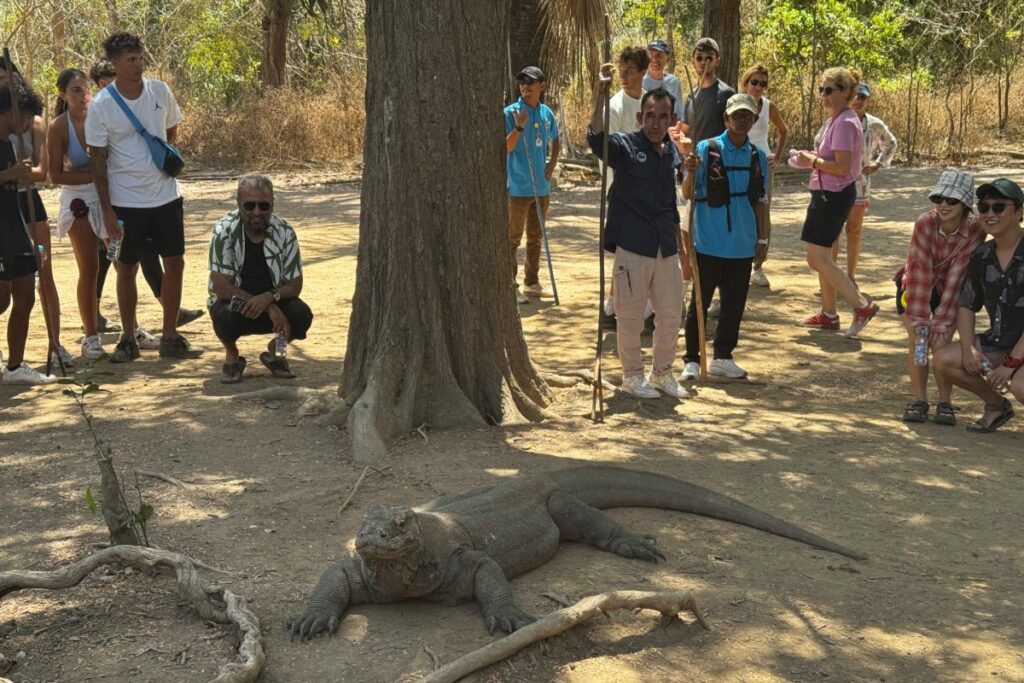
The park has had some fatal incidents
During the safety briefing, our guide recounted some tales of foolish tourists that went exploring on their own and became a meal — or were at least critically injured. I researched the stories when I got home and they were all true. Here are just some incidents that have occurred in the last 50 years.
- A man strayed from his group in 1974 and was never found again. A cross sits somewhere on the island where they found his camera in a pool of blood, but not so much as a bone ever turned up.
- Then there was an 8-year-old boy from one of the local villages on the island who was snatched while playing with his friends in 2007.
- In 2017, a tourist ignored the guides’ advice and tried to get a closeup shot of Komodo dragons while they were eating. Surprise surprise, he got bitten, but was rushed to hospital and survived.
- And most recently, one of the builders constructing a controversial resort on Rinca Island was bitten in 2020, but also survived.
All of this to say: they can’t exactly keep risking tourists getting bitten or dying. So I can see why they may have started slipping them sedatives to avoid more incidents.
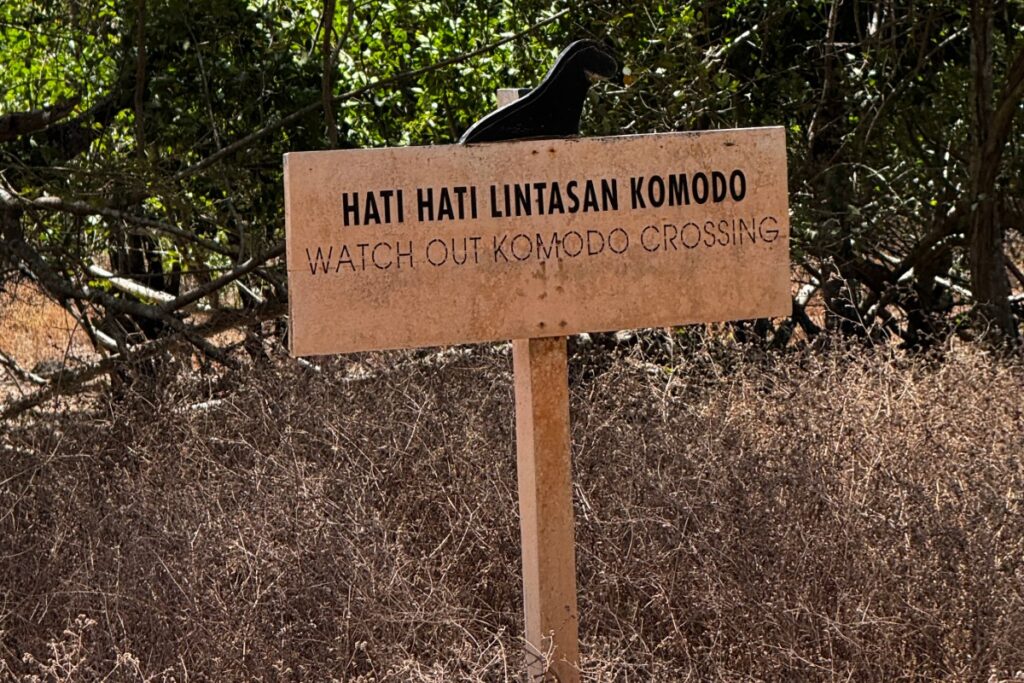
The Komodo dragons looked sleepy
Yes, they’re cold-blooded lizards in the hot Indonesian sun. They love a siesta. I totally get it. But the big one looked sleepy sleepy.
The smaller female we saw on the beach was just chillin’ under a tree. But this was after our guided walk and we were no longer accompanied by a park ranger. After everything he’d said throughout the walk — insisting we stay close or risk getting eaten alive — letting tourists approach a “more aggressive” female on the beach without supervision felt unaligned.
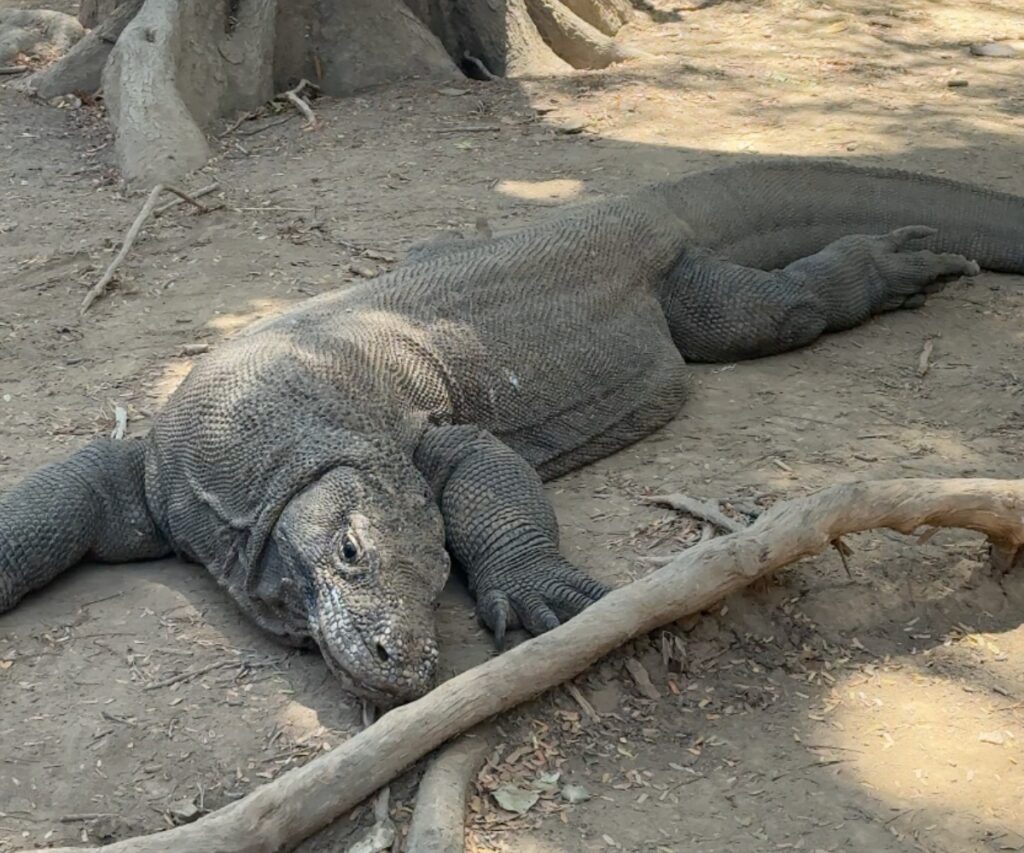
This is where he looked the sleepiest. Komodo dragon drugged? Or just full after a big meal on a hot day?
They were in suspiciously convenient locations
We saw one male about 15 minutes into our walk, laying below a tree at a point where three pathways converge. In the pathway. Not hidden away in the forest or camouflaged in a mud pool. Just out in the open.
The female was right on the beach next to a market stall selling coconuts.
Animal abuse is rampant in other parts of Asia
It wouldn’t be so unlike the treatment of other animals in Asia (and other parts of the world, actually).
As we already know, elephants are chained and beaten into submission to perform tricks or become an amusement park ride for tourists. Tigers and other big cats are drugged and declawed to be subdued enough for tourists to pet. Critically endangered orangutans are still taken from their mothers at birth to be used as photo ops.
P.S. please don’t do these activities. We are the problem.
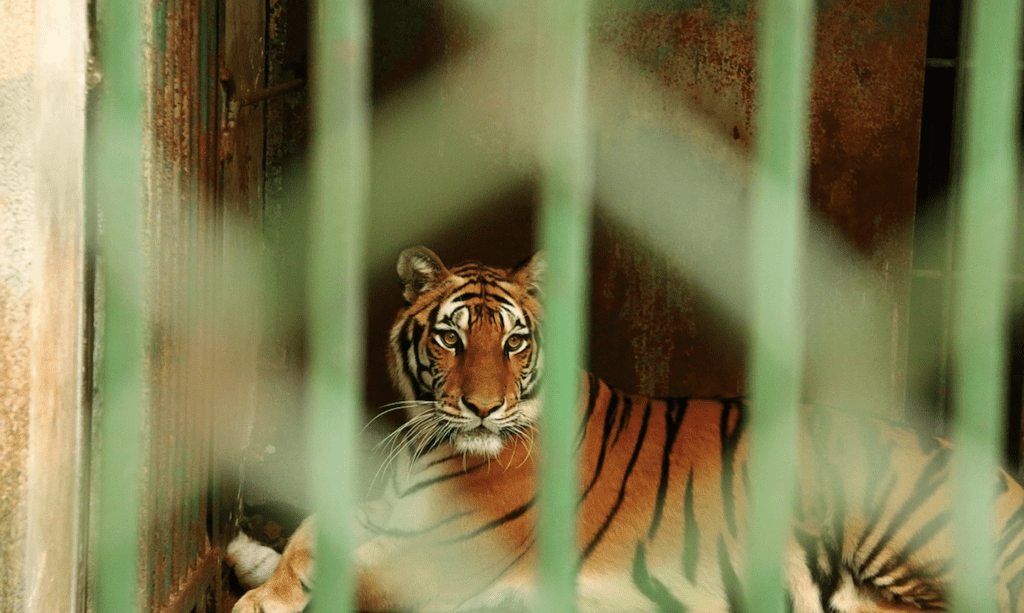
My experience on Komodo Island
I’m still torn. On one hand, it was amazing to see this rare, endemic, and fascinating species. But on the other, it was a disappointing experience where we were herded through the national park like cattle. At least 50 people were all crowded around the one male Komodo dragon at the same time. And guides were taking turns queueing visitors to make sure everyone got the perfect picture.
Our ranger, armed with a large stick, warned us that we might not see any dragons. “This isn’t a zoo.” And while they weren’t in cages, the one we saw just so happened to be right at the centre of a junction. The second, a female, was lounging on the beach near the dock without any supervision.
I recalled that he’d said the females are more aggressive, and sort of looked to him again to quietly confirm this one was also sedated. But this was a mistake lol. I think he was ok with revealing the secret to me on the down low, but seemed to instantly regret letting it slip when I asked again. He kind of waved me off and said, “don’t worry about it,” then walked away.
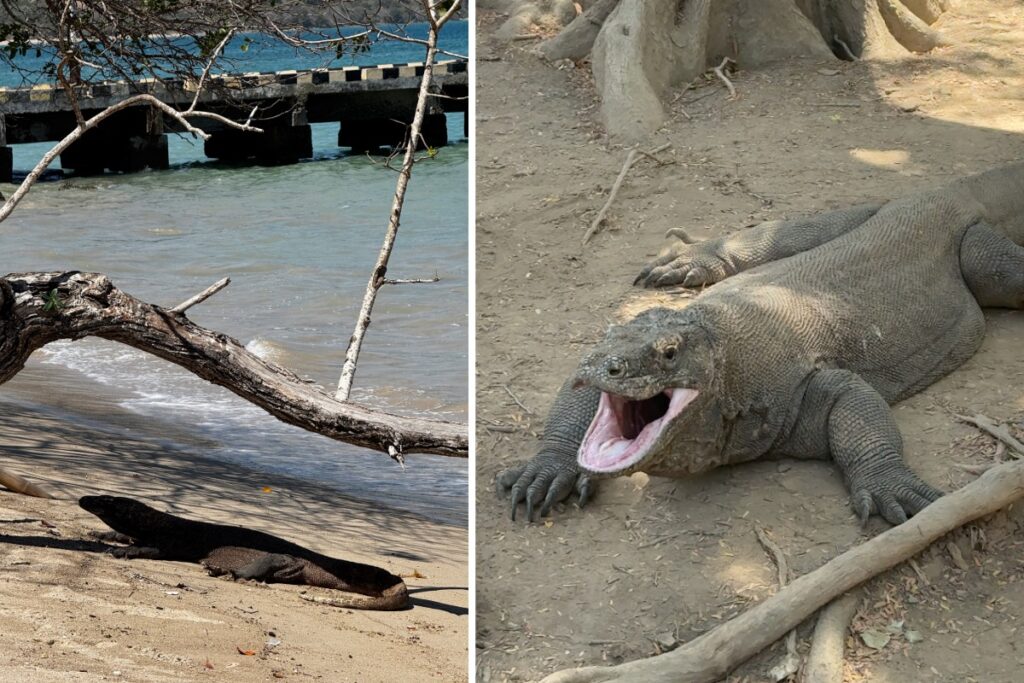
Don’t forget an eSIM for your trip to Indonesia.
What other sources said when I searched "Komodo dragons drugged"
Feeling like a bad tourist, I was expecting to find lots online to confirm what the ranger told me. But if anything, I found several sources explaining it away. And they make some fair points.
- They’re cold-blooded creatures. So if they look sleepy when you visit at noon on a 30-degree summer day, they are.
- Sedating animals is illegal in Indonesia. It’s a high-profile tourist destination and UNESCO World Heritage Site, so surely there’s some supervision.
- The Komodo dragons are used to people. They don’t feel threatened by humans anymore because they’ve all spent their lives seeing tourists day in and day out.
- The park rangers make sure they’re well fed. They’re lazy because they’re so full, and not tempted or hungry when around humans.
But other tourists had the alarm bells going off, too. First of all, I probably spoke to 10 people about this in the days leading up to my visit. Then there are lots of people on Tripadvisor calling it a tourist trap and saying the animals looked drugged. However, nothing is confirmed.
Actually, since publishing this article, I spoke to someone in my hostel who showed me videos from his visit. He saw two male Komodo dragons hanging out together and they both seemed quite active. He’d also spoken to people on his boat about whether or not the animals look sedated, but he didn’t think so.
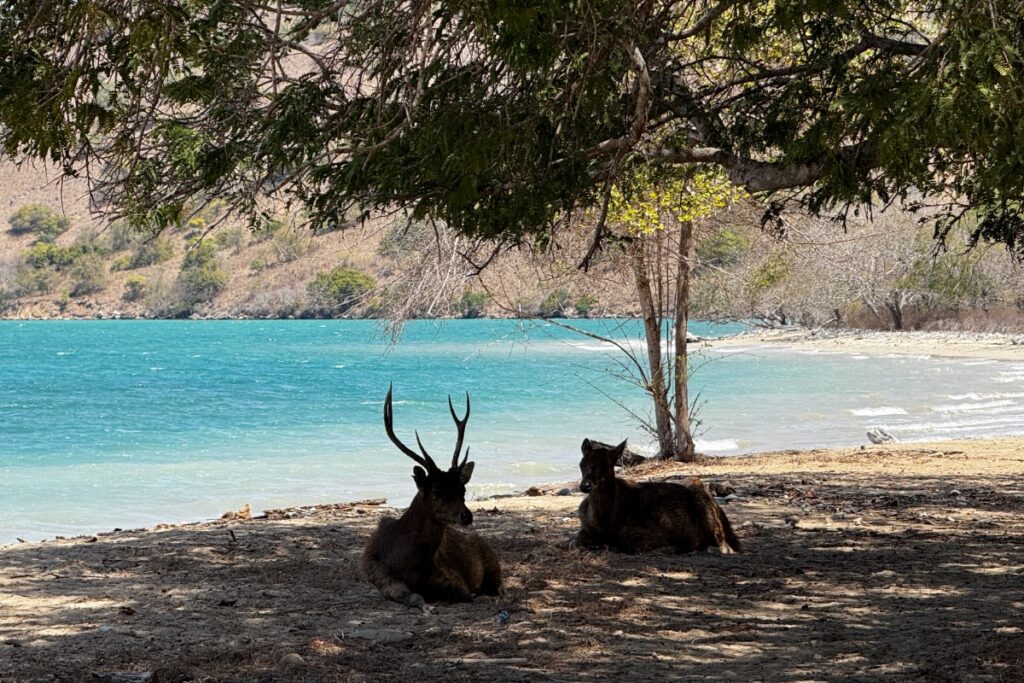
Timor deer are a main food source for Komodo dragons
What can we do about it? (If it's true)
Maybe we need an undercover cop with a mysterious past to pose as a park ranger and go behind the scenes. I don’t know. But I’d love to see an unbiased, reputable third-party investigate this.
Unlike with the elephant “sanctuaries” in Thailand that let you ride and wash them, I don’t think a boycott would work in this case. (But I do believe if tourists stop paying to ride elephants and pet tigers, they’ll stop being exploited for our entertainment.)
I don’t see a world in which people simply stop visiting Komodo National Park. I’m not even sure that would be a good idea, because the 600,000 IDR (36 USD, 60 NZD, 31 EUR) fee goes towards conservation and maintenance. They’re currently endangered, so I’m not sure what would happen to the Komodo dragon population if the financial support from tourism was cut off.
I’m sorry I don’t have an answer.
(Obviously the answer is for the park to stop drugging the animals and let tourists view them from a safer distance. But like, I don’t have an answer for what we can do.)
I can’t even really recommend that you go with an ethical tour operator. Because if it’s true, the sedation is happening within the national park and it won’t matter which tour company you choose to take you there. That said, make sure you get to the island with a verified tour provider for the best experience.
Interesting facts about Komodo dragons
They’re not just big lizards! Komodo dragons really are one of the most interesting and unique animals on the planet. To take a break from the grim topic of whether Komodo dragons drugged in the park, here’s what makes them so cool.
- Their venom isn’t really what kills their prey. It just prevents blood clotting, causing the animal to bleed out quickly and go into shock so it can’t run away.
- Komodo dragons can swallow a pig whole. Hooves and all. In fact, it can eat up to 80% of its bodyweight. Google it — it’s wild.
- They can swim long distances. Like they’ll pop over to a neighboring island to look for food.
- They can smell blood up to 5 kilometers away. Our guide said you shouldn’t visit “when you have blood” and pointed vaguely in the direction of my uterus lmao.
- Female Komodo dragons can fertilize their own eggs to reproduce. They don’t need no man. It’s called parthenogenesis.
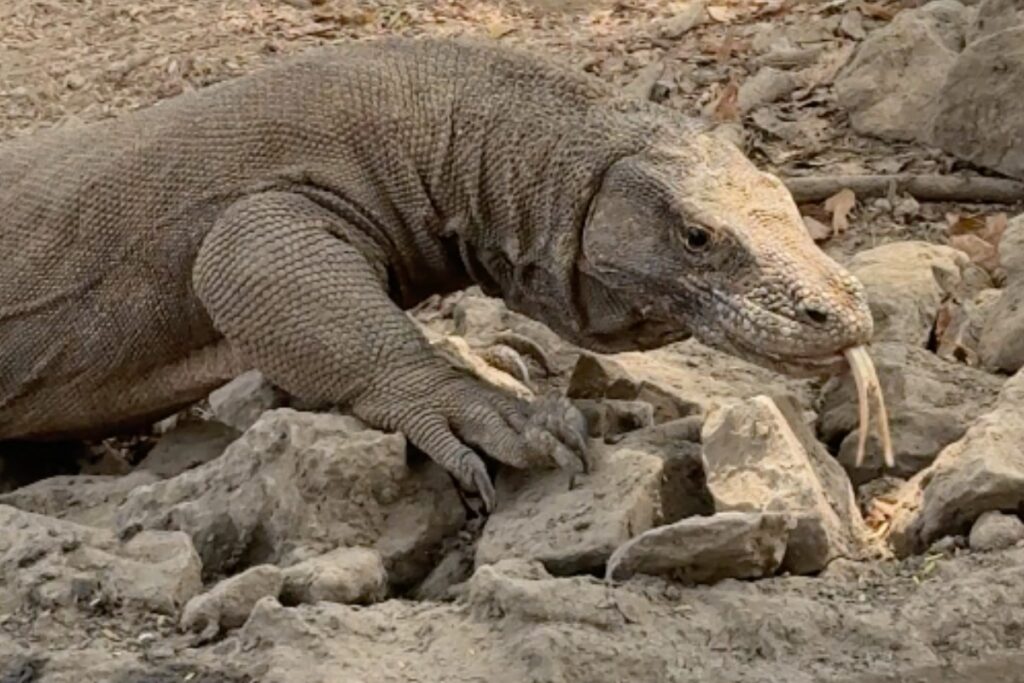
- Komodo dragons are cannibals. They even eat their own babies! So newborns hatch and run for the trees, staying up there for a few years until they’re big enough to fend off their scary parents.
- They were recently reclassified from vulnerable to endangered by the International Union for Conservation of Nature. The population saw a drastic drop around the late 90s/early 2000s, but have actually increased again in the last 10 years. There are only around 3,000 remaining. All the more reason not to drug/abuse them.
- Komodo dragons have existed for millions of years. They’re a “living dinosaur.” Dinosaur dragon, nice.
- Indonesia has an invisible “wall” called the Wallace Line. Back in the 1800s, a guy named Alfred Wallace noticed the biodiversity east and west of Bali were totally different — and they never seemed to cross this imaginary border. Komodo dragons live on the east side, while orangutans and elephants live in the west.
And this is just an interesting fact about Komodo National Park:
In 2022, they proposed raising the entry fee from 50,000 IDR to 3,750,000 IDR. A like… 7,000% increase lol. Eventually they landed somewhere in the middle and it’s now 600,000 IDR (36 USD, 60 NZD, 31 EUR) for international visitors.
Controversial, but I think the idea of an expensive barrier to entry isn’t the worst idea. It would mean fewer tourists visit overall. However, if you’re paying 200 bucks for entry, you’re going to expect a guaranteed sighting, so I’m not sure it would be enough to deter drugging the Komodo dragons.
What do you think, are Komodo dragons drugged? If you’ve been to the park (and even if you haven’t), I’d love to know your take!

